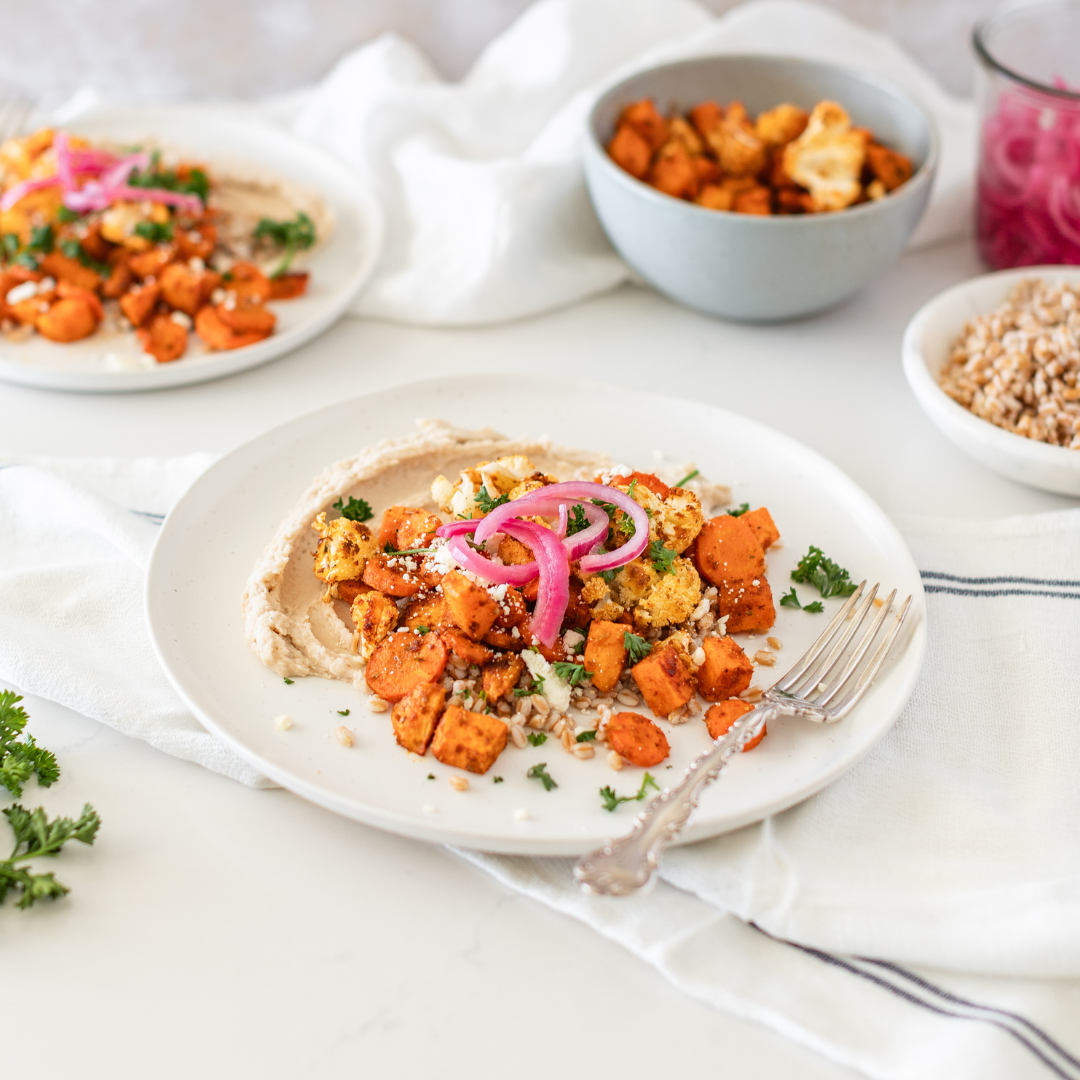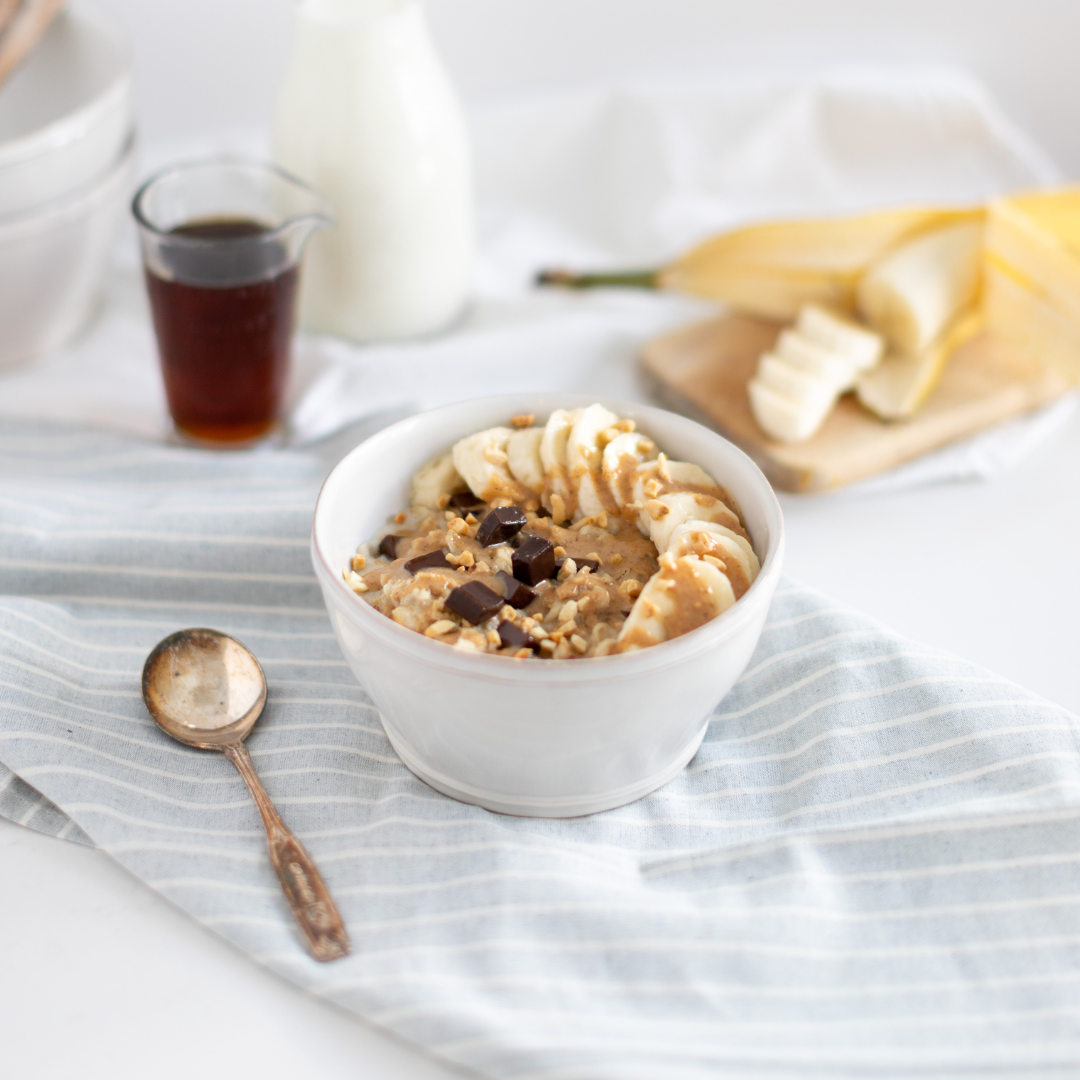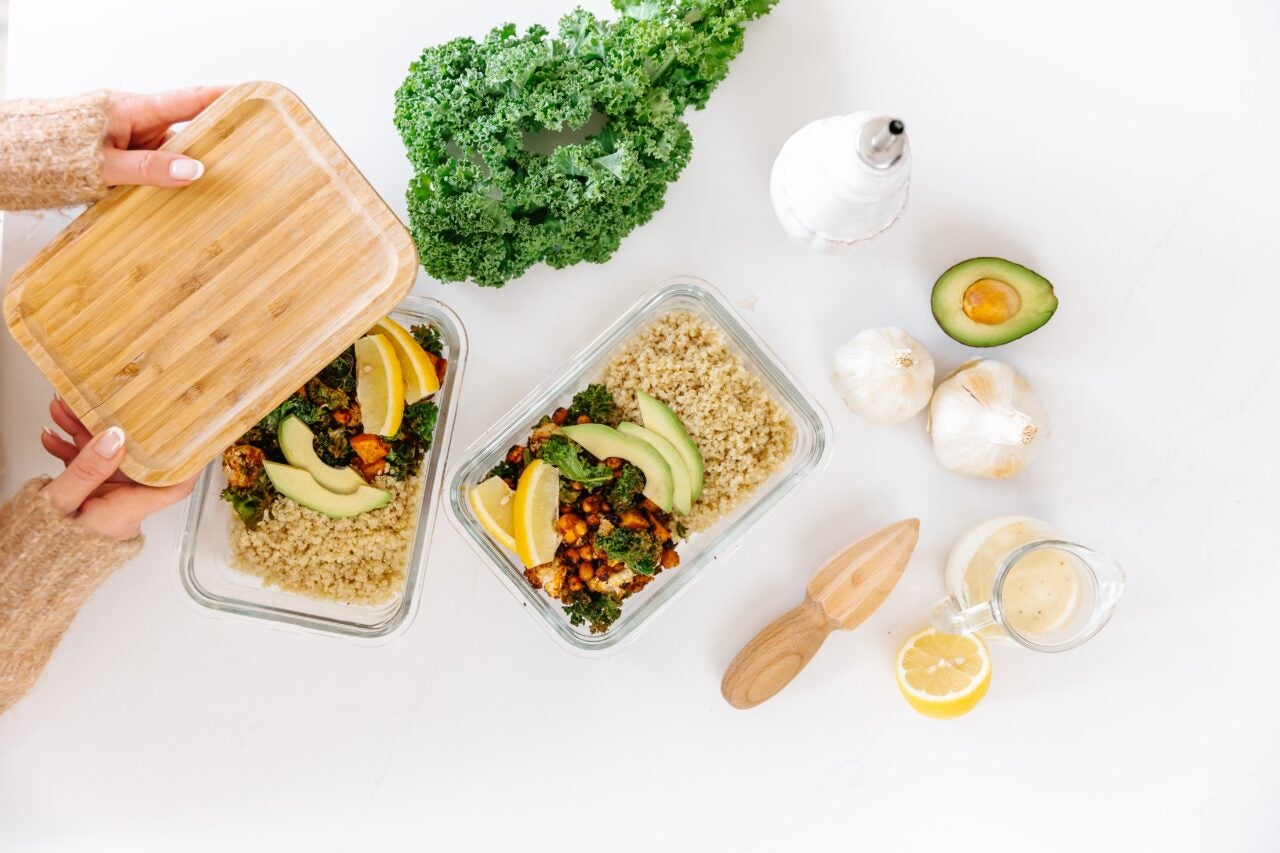Spoiler: Probably more than you think.

When we talk about nutrition, the spotlight usually goes to the big three: protein, carbs, and fat. They’re the headliners– the nutrients we all know and (usually) track.
But if there were an underrated powerhouse in the nutrition world, it’s fibre.
While it doesn’t get the flashy marketing of protein or the polarizing reputation of fat, fibre is the quiet MVP—like the introvert at the party who ends up being the most interesting person in the room.
So what exactly is fibre– and why is it suddenly getting so much attention?
Let’s dive into the fibre fundamentals, how much you actually need, and the surprisingly simple swaps that can help you feel better, think clearer, and stay fuller longer. And yes– we’ll talk about how Fraîche Table can help you reach your goals without overthinking every meal.
Wait, What Is Fibre Anyway?
Fibre is the indigestible part of plant foods. Unlike other carbs that your body breaks down into energy, fibre passes through your digestive system mostly intact. Think of it as nature’s broom– gently sweeping things along and keeping everything moving.
There are two main types of fibre to know:
- Soluble fibre dissolves in water to form a gel-like substance. It helps lower cholesterol, regulate blood sugar, and keep you feeling full. (Find it in oats, beans, lentils, apples, flaxseeds.)
- Insoluble fibre doesn’t dissolve– it adds bulk to stool and keeps things moving. (Think whole grains, nuts, seeds, and veggie skins.)
For optimal health, you want a good mix of both.
Why Fibre Deserves a Bigger Role on Your Plate
Fibre isn’t just about digestion (although yes, it helps you stay regular). It also supports:
- Gut health: Fibre feeds your gut microbiome– aka the good bacteria in your belly– which supports immunity, mental health, and more.
- Blood sugar balance: It slows sugar absorption and helps maintain stable energy and focus.
- Heart health: Soluble fibre helps lower LDL (“bad”) cholesterol.
- Satiety: High-fibre meals help you feel fuller longer—no endless snacking required.

How Much Fibre Do You Need Daily?
According to Canada’s Food Guide:
- Women need about 25 grams of fibre per day
- Men need about 38 grams
But the average Canadian only gets around 14 grams per day. That gap isn’t just a number– it could be affecting everything from digestion to long-term disease risk.
What’s Blocking Our Fibre Intake?
The rise of ultra-processed foods means we’re eating fewer whole, plant-based staples. Refined grains, sugary snacks, and quick-fix meals often lack fibre entirely.
And yet, you don’t need to overhaul your diet to change that.

Easy Fibre Swaps That Make a Big Impact
Try these low-effort upgrades to naturally boost fibre in your day:
- Swap white bread or pasta for whole grain
- Trade white rice for quinoa, farro, or brown rice
- Choose oatmeal or high-fibre granola instead of sugary cereal
- Add lentils to soups, chickpeas to salads, or black beans to tacos



- Keep the peels on fruits and veggies (when possible)
- Sprinkle chia or ground flax on oats, smoothies, or in baking
- Snack on air-popped popcorn instead of chips



Still Not Getting Enough?
If you’re doing your best and still falling short, fibre supplements like psyllium husk, inulin, or partially hydrolyzed guar gum can help. Just increase slowly, drink plenty of water, and consult your healthcare provider if needed. And remember, supplements are just that– they aren’t meant to replace a good diet.
High Fibre Recipes Built for You
Even when you’re mindful of your nutrition, it’s easy to fall short– especially when time is tight and mental bandwidth is low.
That’s exactly why I created Fraîche Table.
As a dietitian and a mom, I wanted a simple, beautiful meal plan that supports balanced nutrition (yes, including fibre!)– without you needing to second-guess every meal or count grams. Our recipes are packed with real foods, designed to help you feel full, supported, and nourished in real life– not just on paper.
Final Tips for Adding More Fibre
- Start slow: Too much too fast can cause bloating– ease in.
- Hydrate: Fibre and water go hand in hand for digestion.
- Mix it up: A variety of fibre sources helps support a balanced gut.
Ready to Try It?
Curious how much better you might feel with more fibre in your life?
Try a free 10-day trial of Fraîche Table. Our recipes are designed to be simple, satisfying, and support a balanced diet– with none of the stress. Here are just a few fibre-friendly favourites waiting inside the plan:
- Romesco Beans
- Spring Greens & Grains
- Chipotle Chicken Burritos
- Cookie Dough Overnight Oats
- Chimichurri Bean Salad
Disclaimer: This blog is for general information only and not intended as medical advice. Always consult a registered healthcare professional before making significant dietary changes.
References
Health Canada. Dietary Fibre Intake in Canada. Canadian Community Health Survey, 2015.
Health Canada. Canada’s Food Guide – Nutrients to Limit and Nutrients to Increase, 2019.
Anderson JW, et al. Health benefits of dietary fiber. Nutr Rev. 2009;67(4):188-205.

